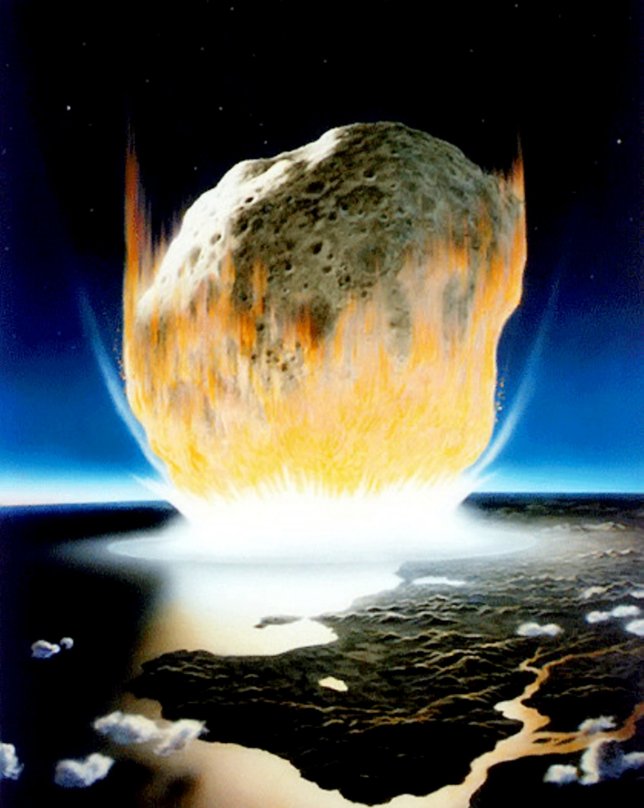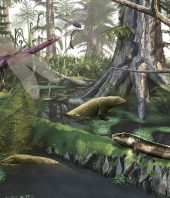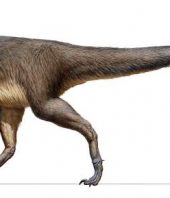A new study has uncovered the after-effects of an asteroid impact which wiped out 75% of life on the planet.
Scientists analysed rocks which filled the gigantic impact crater left by the doomsday space rock, which caused an explosion equivalent to 10 billion of the nuclear bombs which destroyed Hiroshima in World War II.
A new study led by The University of Texas at Austin has revealed that hundreds of feet of rocks that filled the crater at ‘Ground Zero’ within the first 24 hours after impact.
Sean Gulick, a research professor at Institute for Geophysics within the Jackson School of Geosciences, said: ‘It’s an expanded record of events that we were able to recover from within ground zero.
‘It tells us about impact processes from an eyewitness location.’
Most of the material that filled the crater within hours of impact was produced at the impact site, the Yucatan Peninsula in Mexico, or was carried in by seawater pouring in from the surrounding Gulf of Mexico.
A mammoth 425 feet of material (130 metres) gathered in the crater over 24 hours – a rate that’s among the highest ever discovered on Earth. Gulick described the cataclysm as ‘a short-lived inferno at the regional level, followed by a long period of global cooling’.
‘We fried them and then we froze them,’ he said. ‘Not all the dinosaurs died that day, but many dinosaurs did.’ The blast set light to trees and plants thousands of miles away from Ground Zero and triggered a massive tsunami.
Inside the crater, researchers found charcoal and a traces of fungi which suggests ‘the charred landscape was pulled into the crater with the receding waters of the tsunami’.
Jay Melosh, a Purdue University professor who was not involved in the study, said: ‘It was a momentous day in the history of life, and this is a very clear documentation of what happened at ground zero.’
The study supports a theory which suggests the impact vaporised minerals containing sulphur and dispersed them into the atmosphere, where it reflected sunlight and cooled the planet and made it impossible for most lifeforms to survive.
‘The real killer has got to be atmospheric,’ Gulick added. ‘The only way you get a global mass extinction like this is an atmospheric effect.’
Source: Metro, Full Article






